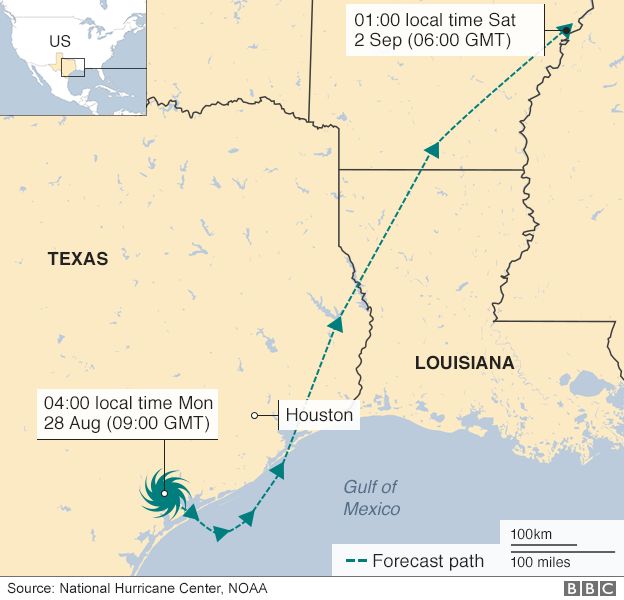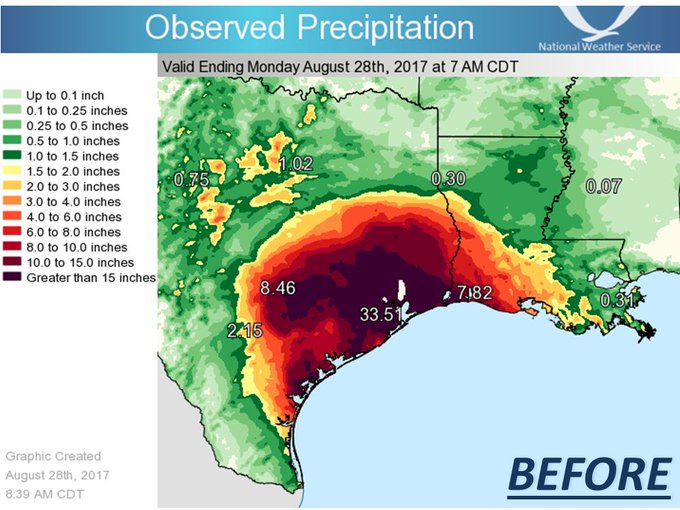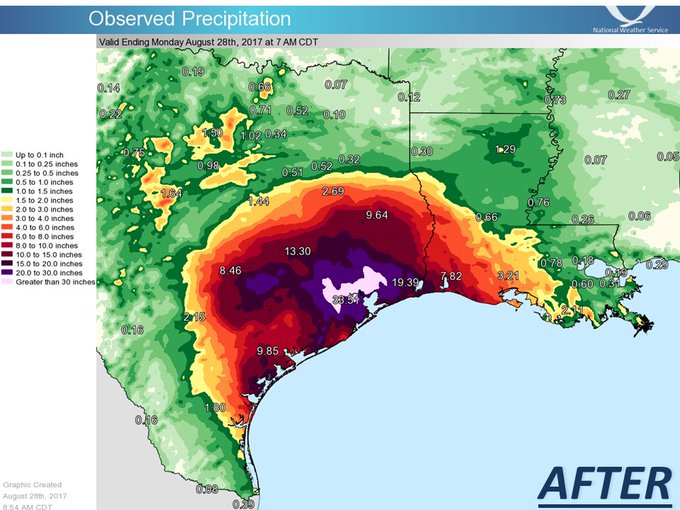"Catastrophic" flooding in the US state of Texas is only expected to worsen in coming days as waters rise following a storm of historic proportions.
A record 30in of rain (75cm) has already fallen on the city of Houston in the wake of Hurricane Harvey, turning roads into rivers.
But forecasters say that number could nearly double later this week.
On Monday President Donald Trump also approved an emergency declaration for neighbouring Louisiana.
Harvey made landfall as a category-four hurricane late on Friday, bringing flooding described by officials as "unprecedented". It was later downgraded to a tropical storm.
Up to 2,000 people have been rescued in and around Houston, the fourth-largest city in the US, where about 6.6m people live in the metropolitan area.
The area is expected to have received a year's rainfall within a week. Five people are reported dead. Helicopters have plucked victims from rooftops.
Governor Greg Abbott has activated the entire Texas National Guard - some 12,000 so-called "civilian soldiers" - to assist national forces in search and rescue operations.
Officials say 30,000 people are expected to be housed in emergency shelters.
"Catastrophic and life-threatening flooding will continue across south-eastern Texas," the National Hurricane Center said on Monday.
"Additional rainfall accumulations of 15 to 25 inches are expected".
Meanwhile, army engineers have begun releasing water from two dams controlling water flowing along a major river into the heart of Houston.
Officials said they were opening the Addicks and Barker dams to stop water spilling into neighbouring communities, but that this could cause further damage down the Buffalo Bayou.
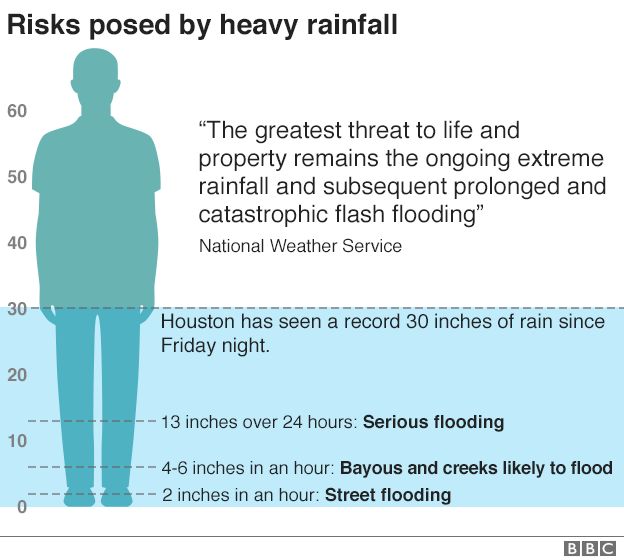
The National Weather Service (NWS) said the worst of floods were expected on Wednesday and Thursday, Reuters reports, although there is still uncertainty about the storm's path.
Thousands of homes are without electricity.
Many schools are closed - as are Houston's two main airports, with runways completely flooded.
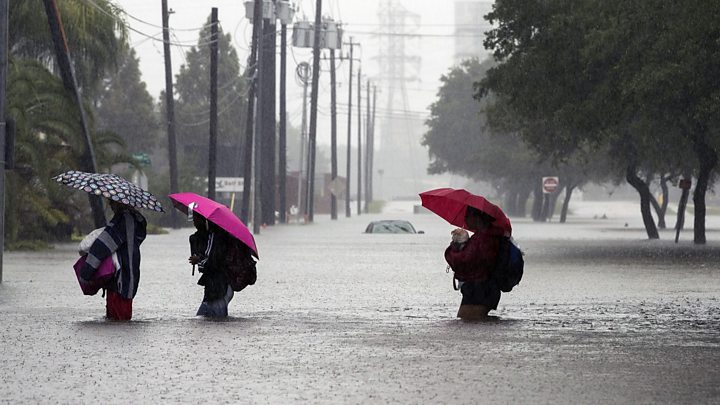
An inundated care home in Dickinson, about 30 miles (50 km) south east of the city, has now been evacuated by helicopter after an image of several elderly women sitting in a lounge in waist-deep water went viral on social media.
The Texas Gulf Coast is a key centre of the US oil and gas industry, and some of the largest refineries in the country have halted operations.
A city in crisis
By James Cook, BBC North America correspondent, Houston
Entire suburbs are under water, shops and businesses are shut and, with the motorways around the city cut off and both airports closed, travel is all but impossible.
A marooned hospital has been evacuated while, above the city, engineers are starting an emergency release of water from two bulging dams.
They are warning families who live beside one of the dams to prepare for flooding within hours.
Some residents have been critical of the preparations for this storm, which intensified rapidly in the Gulf of Mexico last week.
In at least one neighbourhood facing severe flooding, people are angry that they were told to stay put only to realise, as night fell, that the waters were rising fast and they could not get out.
The authorities are being stretched to breaking point. It is difficult to see how they could accommodate President Trump, who plans to visit Texas on Tuesday.
If he does decide to travel here, he will find a powerful oil city on its knees.
Similar levels of 15-25in of rain are predicted for south-western and central Louisiana.
The state suffered huge destruction following Hurricane Katrina in 2005.
Observers have drawn comparisons with the disastrous evacuation of homes in New Orleans ahead of Katrina, which left thousands of people stranded in squalid conditions at that city's stadium.
Tens of thousands of people have been ordered to leave parts of Fort Bend County, about 35 miles south-west of Houston, where a river is set to crest this week
Dallas, 240 miles north of Houston, will set up a "mega shelter" at its convention centre to house 5,000 evacuees, city officials said.
But Houston authorities have not issued a mass evacuation order.
Mayor Sylvester Turner on Sunday defended the decision by citing the "crazy" logistics of planning an evacuation of 2.3 million people.
Meanwhile, Police Chief Art Acevedo said officers were focused on protecting the city from looters, with four people arrested on Monday.
